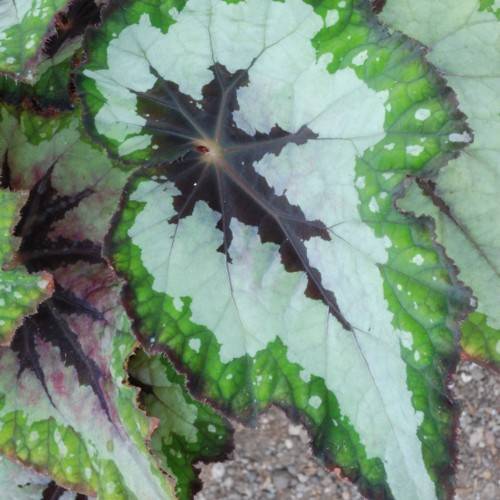
begonia
Begonia 'Green Gold'
Cycle:
Herbaceous Perennial
Watering:
Average
Hardiness Zone:
10 - 11
Flowers:
Flowers
Sun:
part shade,part sun/part shade
Leaf:
Yes
Growth Rate:
Low
Maintenance:
Moderate
Indoors:
Yes
watering
There are many different types of begonias and they all have slightly different watering requirements. Generally, begonias need to be watered well and then allowed to slightly dry out before they are watered again to help prevent disease. Begonia 'Green Gold' should be watered whenever the top inch of soil is dry, which is usually once or twice a week. During the summer, you may need to adjust this schedule to once every 3 days. Always check the soil first to determine if the plant requires water.
sunlight
Begonias require bright, indirect light for best growth. For your specific variety - Begonia 'Green Gold' - it is best to provide it with at least 4-6 hours of bright, indirect sunlight each day. Try to position it near a south- or west-facing window to benefit from the most sun, but make sure to move it away from direct sunlight that could be too intense for the plant. During the summer months when the sun is strongest, you may need to move it away from the window and into indirect sunlight to protect it from getting burned.
pruning
Begonias are easy to prune and should be done regularly to encourage growth. 'Green Gold' begonias need to be pruned back lightly throughout the spring and summer, especially when the plant is actively growing. During the springtime, you should cut back any long or straggly stems to help encourage a bushier growth habit and to keep the plant contained within its pot or bed. When pruning during the summer, remove any dead leaves or shoots. This will help encourage healthy, robust growth and keep the plant blooming for longer throughout the season.
FAQ
Could Begonias be grown indoors?
Yes, Begonias can be grown indoors in a bright, sunny area. Begonias do best in temperatures between 60-70F and require a lot of moisture for healthy growth so consistent watering is key. They prefer indirect light and should be placed in a spot where they will receive indirect sunlight from a window or artificial lights that are around 12-14 hours each day. Begonias should also be fertilized with a house plant fertilizer once every 2 weeks and have their soil monitored to ensure proper drainage.
Are Begonias frost-tolerant?
Begonias are not typically very frost tolerant plants. While they can tolerate temperatures that dip slightly below the freezing mark, they cannot handle sustained cold temperatures or extended periods of frost. If you live in a region that experiences cold winters, it is best to treat your begonias as annuals and replant them in the spring and summer months.
Should Begonias be deadheaded regularly?
Yes, Begonias should be deadheaded regularly to support lush blooming and encourage healthy plants. Deadheading involves trimming off dead flowers and foliage and can be done with scissors or by pinching stems between your fingers. This helps promote new blooms and ensures Begonias remain healthy and vigorous. While the act itself is simple, it is important to deadhead regularly and consistently to keep your Begonia looking its best.
Could Begonias be propagated by stem cuttings?
Yes, begonias can be propagated by stem cuttings. To do so, use scissors or a sharp knife to cut the stem just below a node - that is the place on the stem where the leaves are growing. Make sure you have at least two set of leaves on each cutting and a few centimetres of stem above each node. Once you have your cuttings, remove the lower leaves and dip the cut ends into rooting hormone to encourage root growth. Then place the cutting into a moist peat moss and cover the pot with a clear plastic bag. Keep the pot in bright indirect light and make sure it's kept moist, misting it occasionally. After a few weeks, you should see roots beginning to form. Once the roots are established, you can transfer the plant to a pot with its permanent home.
Do Begonias have a strong scent?
No, Begonias do not have a strong scent. They have a thin, mild scent that is not especially overpowering or noticeable, especially when compared to other flowers such as roses or jasmine. Begonias are primarily known for their wide variety of colors, textures and sizes, rather than their scent.
Are Begonias invasive?
No, Begonias are not invasive. Begonias are classified as "tender perennials" and they remain in the same place year-round. While they can spread in favorable growing conditions, they are not considered an invasive species, as they are not capable of forming large colonies that can out-compete native vegetation. Begonias require consistent and frequent care as they do not survive heavy pruning, drought, or extreme heat or cold.
Could Begonias be grown from seeds?
Yes, begonias can be grown from seeds. They are easy to sow, and can be started indoors or outdoors. Starting begonia seeds indoors is recommended since they take a while to germinate and grow. Begonias need light to germinate, so keep in mind to sow the seeds shallowly and not to cover them with soil. Additionally, water the soil regularly to ensure it doesn't dry out and be sure to use a soilless seed starting mix for optimum germination.
Is Begonia a good plant for a shady garden?
Yes, Begonia is indeed a great plant for a shady garden. Its showy, brightly colored blooms will add some brightness to the area, and its easy-to-care-for nature means you won't have to worry about maintenance. Its shallow roots and bushy nature makes it the perfect plant for adding texture and interest to a garden. With its delicate leaves and vibrant blooms, the Begonia is perfect for providing a surprising pop of color to a shady garden.
